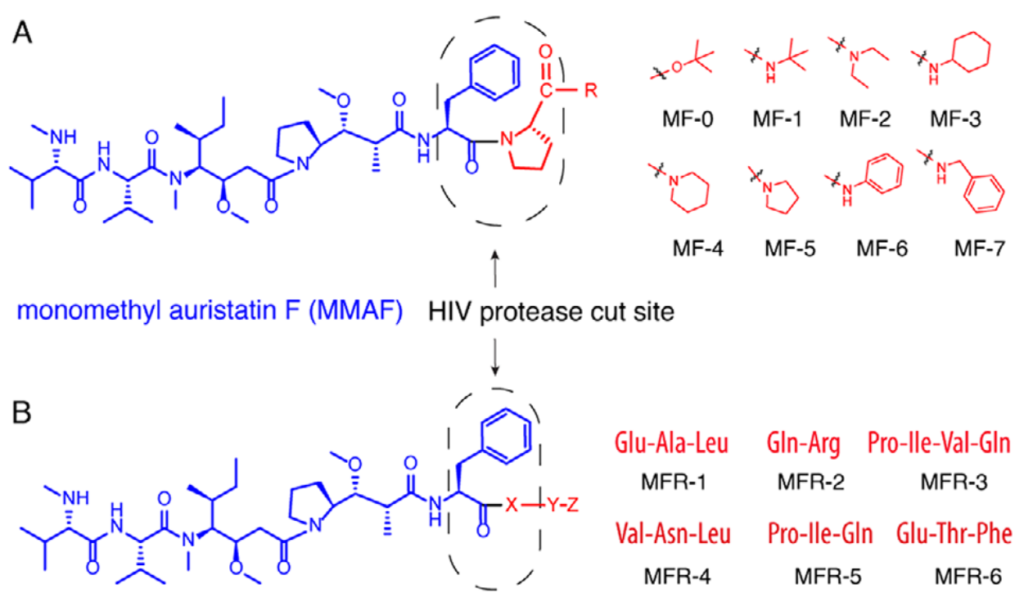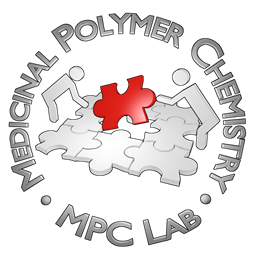“Potentiation of Drug Toxicity through Virus Latency Reversal Promotes Preferential Elimination of HIV Infected Cells”
https://doi.org/10.1002/adtp.202200113
Eliminating latently infected cells is a highly challenging, indispensable step toward the cure for HIV/AIDS. Hypothesis put forward herein is that the unique HIV protease cut site (Phe-Pro) can be reconstructed using a potent inhibitor of tubulin polymerization, monomethyl auristatin F (MMAF), which features Phe at its C-terminus. This presents opportunities to design prodrugs that are specifically activated by the HIV protease. To this end, a series of MMAF derivatives is synthesized and evaluated in cell culture using latently HIV-infected cells. The cytotoxicity of compounds is indeed enhanced upon latency reversal by up to 11-fold. As a result, in a mixed cell population, nanomolar concentrations of the lead compounds depletes predominantly the HIV-infected cells and in doing so markedly enriches the pool of the uninfected cells. Affinity of the lead compounds to the viral protease is validated computationally and experimentally but despite expectations, the mechanism of action of the synthesized toxins is shown to be independent from the enzymatic activity of the HIV protease.

